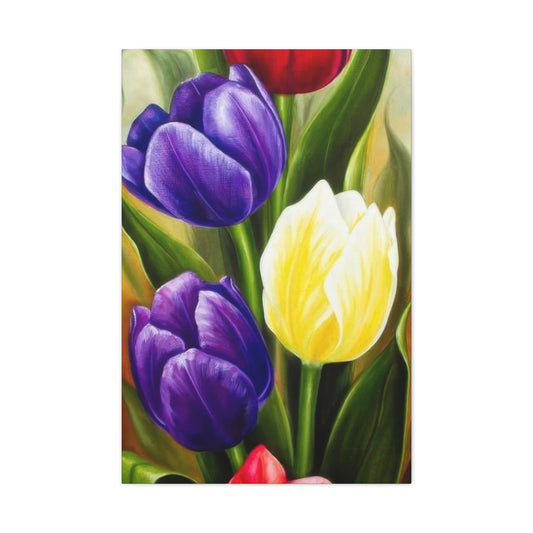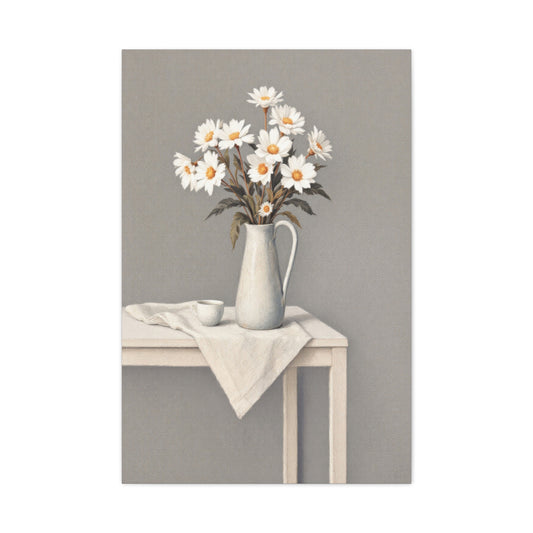Family photography is a profound and heartwarming way to preserve the everyday magic shared between loved ones. Whether it’s a young family just beginning their journey together or a multigenerational gathering brimming with stories, capturing those moments authentically is both an art and a responsibility. Successful family portraiture goes beyond technique—it involves understanding people, guiding them gently, and freezing those genuine glances, soft laughs, and tender embraces that often pass in a blink.
To help photographers of all experience levels guide their clients into natural and engaging compositions, here are seventeen thoughtfully crafted family poses designed to bring out the best in every session.
How to Prepare for a Family Portrait Session
Before diving into poses, preparation is essential. Photographing families involves much more than lining people up and clicking the shutter. It requires communication, technical choices, and the ability to adapt to a variety of situations—from energetic toddlers to shy teens or moody weather conditions.
Take time to get to know the family before the shoot. Ask who will be attending, what their relationships are, and whether there are any special dynamics or sensitivities to be aware of. Knowing how siblings interact, whether grandparents are involved, or if pets will be present allows you to craft more personal and successful images.
Plan your gear thoughtfully. A wide-angle lens allows for more immersive, close-knit shots—ideal for dynamic family groupings—while a telephoto lens can give you gorgeous subject separation with a soft background that makes portraits feel dreamy. Always bring backups and consider prime lenses for sharpness and clarity.
Create a shot list that balances structure and spontaneity. While you want room for candid moments, having a variety of pose ideas ensures you’re ready when attention spans are short or energy begins to dip.
Now, let’s explore a collection of poses that invite connection, storytelling, and lasting memories.
1. Strolling Together Side by Side
This pose is a tried-and-true beginning to any family photo session. Asking parents to walk hand-in-hand with their child in the middle allows for movement, relaxation, and conversation. The natural sway of walking reduces stiffness and brings out genuine expressions without the need for heavy direction.
|
Related Catagories: |
To elevate the intimacy of this pose, position yourself at the child’s eye level. Shooting from this lower perspective not only adds visual interest but also reinforces the child’s role as the focal point of the family unit. Wide-angle lenses work especially well here, allowing you to frame the family together while capturing the surrounding environment in a way that feels immersive and storytelling.
Consider alternating between front and rear views. When you photograph the family walking toward you, you’re likely to catch joyful expressions and playful interactions. When you step behind them, you can capture gentle hand-holding, synchronized footsteps, or the comforting touch of a parent’s hand on their child’s shoulder.
To avoid monotony, use natural landscape elements to your advantage. If you're shooting in a park or trail, frame the family within tree-lined paths or let sunlight filter through foliage for an ethereal effect. On a beach, let the shoreline lead your composition, using the motion of waves and footprints to add narrative texture.
This walking pose also works wonderfully to transition between more structured setups. It provides a moment of calm and helps everyone settle into the shoot without feeling overly posed.
2. The Confident Toddler Leads
There’s something deeply moving about watching a child take their first independent steps. Those early months of walking are filled with hesitation, discovery, and sheer excitement. Letting a toddler walk ahead while their parents follow is not just a visually engaging pose—it’s an emotional one. It frames the child as the emerging explorer, while the parents serve as loving anchors in the background.
This pose works best in open, safe areas where the child can roam freely—think open fields, garden paths, or boardwalks. As a photographer, your job here is to be observant and quick on the draw. Toddlers rarely move in predictable ways. They stop to examine rocks, spin in circles, or run unexpectedly. Be prepared to adjust your position frequently to capture these moments from multiple angles.
Position yourself to the side or slightly ahead of the child, depending on their path. If the toddler turns to look at their parents, be ready to catch that glance—it’s often filled with pride, surprise, or joy. You might also photograph the parents looking on with gentle smiles, creating a quiet frame of protection around the child’s adventurous spirit.
Vary your depth of field depending on your intent. A shallow focus can emphasize the child while subtly blurring the parents, evoking the feeling of a world expanding. Alternatively, keeping both child and parents sharp in focus provides balance and communicates unity.
In some versions of this pose, the toddler can hold a small object—a flower, toy, or leaf—which not only gives them something to engage with but also adds visual detail to the image. Try incorporating elements that connect with the family’s personality or values to make the shot more meaningful.
This is less a “pose” and more a prompt. Your aim is to let the moment breathe and unfold organically. With patience, you’ll come away with images that encapsulate the fleeting beauty of early independence.
3. Shoulder Rides and Carried Moments
Few poses deliver as much warmth and whimsy as carried shots. These setups resonate with every parent-child bond and offer creative variations that range from quiet and sentimental to energetic and fun. Whether a child is carried in arms or riding atop a parent’s shoulders, these moments speak to closeness and trust.
One of the most beloved versions of this pose involves placing a toddler or small child on a parent’s shoulders. It changes the composition dramatically by introducing height variation and layering, allowing you to build dynamic shapes within the frame. This pose often brings out uninhibited joy from children, who enjoy the elevated view and natural sense of play it provides.
You can position yourself slightly in front, behind, or even beneath the subjects for different visual effects. Shooting from a low angle with the sky as a background simplifies the frame and draws focus to the bond between parent and child. This approach also emphasizes scale, highlighting the child’s place within the broader world while staying safe in their parent’s care.
For a more sentimental version, have one parent gently cradle the child while walking beside their partner. The movement adds life, while the physical closeness showcases tenderness. This pose is especially useful when working with children who are feeling shy or tired—it offers them comfort and provides a genuine opportunity for natural connection.
When photographing families with more than one child, the symmetry of each parent carrying one child offers visual balance. You can also create asymmetrical compositions, placing the family on a sloped surface or along a winding path to add visual intrigue.
To emphasize storytelling, consider the child’s expression, the texture of the environment, and how light moves across their faces. Golden hour lighting, in particular, softens features and bathes the frame in warmth, elevating the emotional tone of the image.
Encourage laughter and interaction. Ask the parent to gently bounce the child or point at something in the distance. These actions evoke reactions and add authenticity to your composition. Avoid over-directing—your role is to prompt, observe, and click at the right moment.
Carried poses are not only visually striking, but they also serve a practical purpose. Children feel safe, and parents often feel relaxed when holding their child. This physical closeness communicates love without a word, making these photos some of the most memorable in any collection.
4. Capture Real Joy Through Interactive Play
Play is at the heart of most family bonds. Whether it’s a toddler’s giggle, a parent’s laughter, or the shared delight of siblings, genuine fun fosters the most beautiful expressions. Encouraging playful moments rather than fixed poses often results in the kind of imagery families cherish for years.
For families with young children, suggest simple activities like twirling in circles, pretending to fly, or running barefoot through a grassy field. Let them explore their surroundings, and follow with your camera ready. Young children often respond best to movement and spontaneity rather than standing still and smiling on command. Games like ducking under a parent’s legs, playing peekaboo behind a tree, or being gently swung by the arms evoke reactions full of wonder and laughter.
Older children and teens may initially be more reserved. In these cases, try breaking the ice with a shared memory or by encouraging them to share something funny. You might ask the family about their favorite games or vacation stories and use that as a foundation for a few unscripted moments. These authentic interactions often spark genuine smiles and natural touch—holding hands, leaning into each other, or casual gestures that enrich the photograph without appearing staged.
In larger or extended families, interaction-based poses become even more important. They reduce the formality of big group arrangements and introduce a storytelling element that reflects how the family functions together. Consider prompting smaller family units to do something playful while others watch or join in. This creates layers of emotion and connection that feel spontaneous and deeply personal.
From a technical standpoint, using a fast shutter speed helps capture movement without losing sharpness. Keep your focus on the faces, and shoot continuously as the action unfolds. Stay light on your feet, anticipate movement, and adjust your position frequently to maintain strong composition and balanced lighting.
Interactive play is the perfect reminder that family photography isn’t just about how people look—it’s about how they feel when they’re together. These images don’t just capture moments; they hold the spirit of a family’s joy.
5. Compose a Narrative with Generational Portraits
When photographing a multigenerational family, you have the rare privilege of showcasing the passage of time and the legacy within a single frame. A well-composed generational portrait not only includes each person—it reflects their role, their bond, and the family's unique story.
Instead of simply lining up the family by age or height, consider a more symbolic arrangement. Place grandparents in a position of quiet strength—perhaps seated, holding hands or side by side—while their children stand nearby, engaged in conversation or sharing a moment with their own kids. Let the youngest generation roam, play, or cuddle with parents or grandparents. These candid layers provide a narrative richness that a standard pose cannot.
If you’re working in a controlled environment, such as a studio or a minimal outdoor setup, you can create symmetrical poses with each generation equally spaced but interacting. For instance, position the grandparents centrally, with their children flanking them and the grandchildren in the front, perhaps kneeling or seated.
For a more editorial take, consider photographing each generation individually in similar lighting and composition, then stitching the images into a visual timeline. This works especially well with consistent backdrops and wardrobe styling that shows generational evolution. The result is a fine-art piece that reflects the family's history and continuity.
Light plays a pivotal role in setting the tone for generational portraits. Use soft natural light or golden-hour sun to convey warmth and intimacy. Black-and-white editing can also enhance the timelessness of these images, emphasizing expressions and relationships over color.
In addition to aesthetics, ask each generation to share a gesture or interaction that feels natural—like a grandchild holding a grandparent’s hand or adult siblings wrapping arms around each other. These subtle details breathe life into your composition and help viewers feel the family bond.
Photographing multiple generations isn’t just a visual exercise; it’s a celebration of family legacy. When you create space for emotional storytelling, you transform a group photo into a meaningful narrative that spans decades.
6. Foster Comfort with Relaxed Seated Poses
One of the simplest yet most effective ways to help families feel at ease during a photo session is to have them sit down together. When people are seated, they tend to relax physically and emotionally, letting go of the tension that often comes with being photographed.
You can arrange the family on a low wall, picnic blanket, porch step, or even a sturdy log if you're shooting in a natural setting. The key is to bring everyone physically close—no noticeable gaps, as distance can unintentionally convey disconnection. Ask family members to lean into one another, drape arms gently, or share soft smiles. This not only creates a pleasing composition but also encourages organic touch, which often enhances emotional expression in your images.
When positioning the group, avoid a rigid linear arrangement. Instead, stagger heights by having some members cross their legs, kneel beside a seated loved one, or lean slightly forward or back. These variations create natural curves and diagonals that guide the viewer’s eye and make the photo more engaging.
Your own camera angle plays a crucial role here. Sit or kneel to bring yourself to the eye level of your subjects. This helps maintain a sense of equality and closeness. Shooting from a higher angle might create visual distance, while a low perspective may exaggerate proportions. Eye-level shooting, on the other hand, helps portray the scene as if the viewer were part of the moment.
Depending on the setting, you can also include elements of the environment in the frame. Leaves scattered around, a textured blanket, or a beloved pet curled up next to someone—these small additions can reinforce the story you’re trying to tell.
For families with very young children, seated poses allow for more control and calm. A parent can cradle an infant or gently support a toddler, keeping the focus on interaction and safety. Meanwhile, older children may lean their heads on a parent’s shoulder, creating spontaneous and affectionate moments.
While these poses may appear simple, they often deliver some of the most emotionally resonant photographs in a session. By emphasizing closeness, comfort, and shared space, seated compositions provide a window into a family’s natural rhythm.
7. The Train Formation: A Visual Rhythm of Togetherness
This seated pose is as creative as it is charming. Arrange the family in a line—one member sitting directly behind the next—like a human train. This playful concept works beautifully for families with several children, but it’s easily adapted for smaller groups or multigenerational portraits as well.
To create a visually pleasing composition, start with the shortest person in front and build toward the tallest at the back. This ascending order naturally draws the viewer’s eye through the frame and gives the image a sense of flow and structure. For families with children of similar ages, you can experiment with alternating heights or mixing parents and kids throughout the formation for variety.
You can guide the mood depending on the family’s personality. Want a lighthearted vibe? Ask everyone to lean forward with big grins or playful faces. Looking for something more serene? Have each person sit close and look in the same direction for a feeling of cohesion and calm.
The train formation also allows for subtle storytelling through body language. A parent might rest a hand on a child’s shoulder, or siblings might lean into one another. These small gestures communicate tenderness without the need for dramatic poses.
Lighting plays an important role in maximizing this formation. Natural light coming from the side can add dimension by casting gentle shadows between the figures. If you're working indoors or on an overcast day, soft even lighting will help maintain detail across each face in the line.
To elevate this pose further, consider your angle. A slightly elevated perspective can showcase the line in its entirety, while a side angle emphasizes the layered depth. You might even combine the formation with other poses—such as a quick pivot into a group hug—to create a natural flow between shots.
The train pose is an excellent way to bring harmony to group portraits while keeping the energy casual and approachable. It encourages closeness while adding a visual twist that families don’t often expect in their portrait sessions.
8. Lift and Laugh: Pure Joy in Motion
One of the most delightful ways to add energy and laughter to your family sessions is to encourage a parent to lift their child into the air. This classic moment is universally adored—it’s playful, emotional, and full of connection. From toddlers giggling mid-air to parents beaming with joy, this pose captures a timeless display of affection and trust.
Positioning is key to making this moment shine. Have one parent lift the child—either straight above or angled slightly toward them—while standing in a clear, well-lit area. Encourage eye contact between parent and child, or let the child look down and laugh. Every version offers a different emotional note.
To make the pose more dynamic, use a lower camera angle. Shooting upward emphasizes height, makes the child appear elevated and joyful, and gives the frame a dramatic, cinematic feel. This approach also removes distractions by simplifying the background—often just sky or treetops.
Capturing this pose requires attention to timing and settings. Use a fast shutter speed to freeze the motion clearly, especially if you're working in natural light. Aim for 1/500 sec or faster depending on the lift height and movement. A wide aperture such as f/2.8 can help isolate your subjects while maintaining depth in facial expressions.
If there are two children, consider having each parent lift one. This creates symmetry and adds playful energy to the session. Alternatively, a seated version of this pose—lifting the child while sitting on the ground or a low bench—can offer a safer and more intimate variation for younger children or grandparents.
|
Related Catagories: |
This pose also works wonderfully during transitions. As the child comes down from the lift, follow them with your camera to capture cuddles, kisses, or continued laughter. These unposed seconds often yield the most heartfelt photos.
Incorporating movement through lifts not only enhances your image variety—it reminds families that joy is a shared, physical, and fleeting emotion that deserves to be captured mid-air, mid-laugh, and mid-love.
9. Embracing Naturally: The Warmth of Real Connection
Few poses evoke more genuine emotion than the humble hug. Whether it’s a quiet embrace between a parent and child or a whole family tangled together in laughter, these moments transcend words and technical perfection. Embraces speak of safety, comfort, love—and they photograph beautifully.
Invite the family to share a group hug. Let it happen organically rather than directing every detail. Tell them to hold each other tightly, laugh, or close their eyes and enjoy the moment. The more they forget about the camera, the more authentic the outcome.
Group hugs can vary in structure. Everyone standing in a tight circle works well for smaller families. For larger groups, try layering—have younger children in front, adults behind, or some kneeling while others stand. These arrangements ensure every face is visible without forcing artificial symmetry.
You can also suggest one-on-one embraces. A mother holding her child close, a father with an arm around a teen, or siblings leaning on each other—all of these variations allow you to build a gallery of intimate portraits from one simple directive.
Angles make a big difference in this pose. Over-the-shoulder compositions create a feeling of peeking into a private moment, while wide-angle shots with environmental context can turn a hug into a cinematic moment of unity. Use close-ups to focus on facial expressions or hands gently clasped.
Lighting should complement the mood—soft and diffused for serene embraces, golden-hour light for romantic warmth, or indoor window light for cozy, everyday intimacy.
The best part of this pose is its adaptability. It works regardless of group size, location, or time of day. It also tends to disarm subjects who might otherwise feel camera shy. In a hug, people drop their shoulders, let go of stiffness, and return to being themselves.
Even after you've captured the primary hug, don’t put your camera down. Often the moments immediately after—when people laugh, tease, or wipe away a tear—are even more powerful. These are the images that parents print, frame, and treasure.
10. Bringing Everyone Down to Eye Level
In family photography, emotional intimacy often starts with visual equality. One of the most effective ways to highlight the bond between parents and children is to physically align them on the same plane. When parents kneel or crouch beside their kids, their heads meet at eye level, and the dynamic becomes one of unity and tenderness rather than top-down authority.
This pose is especially useful with toddlers and young children who are naturally closer to the ground. Having adults lower themselves makes the frame feel cohesive, creating a more balanced composition and encouraging relaxed, natural expressions from the child. It's a gentle way to invite playfulness and vulnerability into the frame.
From a composition standpoint, you can experiment with both central framing and triangular arrangements. Placing the child in the middle, flanked by the parents on either side, forms a visual triangle that draws attention directly to the child's face. This arrangement is particularly impactful when the family is tightly grouped, with shoulders touching or arms wrapped gently around one another.
Encourage interactions like nose-to-nose touches, forehead kisses, or holding hands. These gestures add subtle emotion to the portrait and tend to feel organic. The proximity allows for these moments to unfold naturally, and your role is simply to capture them at their peak.
This pose also allows for flexibility in setting. Whether indoors on a living room floor or outdoors in a field of wildflowers, the simplicity of crouching together makes it easy to adapt to any location. Use a wide aperture to softly blur the background, keeping the focus on their expressions, and shoot from their eye level to enhance the feeling of connection.
By bringing everyone down to the same level, you're not just improving composition—you’re leveling the emotional playing field, making the image more relatable and deeply human.
11. Parental Kisses
One of the most timeless gestures of love is a kiss from a parent. Whether it's a baby’s cheeks being kissed simultaneously by both parents or a quiet kiss on the temple of an older child, this pose is emotionally loaded and photographically rich.
This affectionate moment often happens on its own during sessions, but it’s perfectly appropriate to prompt it if needed. Let the parents know you're capturing a kiss shot and have them lean in slowly to avoid overlapping faces or awkward placement. The beauty of this pose lies in its authenticity—the child’s delight or surprise, the parents' adoring gaze, and the physical closeness that radiates love.
The versatility of this pose is another advantage. It works equally well standing, sitting, or lying down. In a standing version, have one parent hold the child and the other lean in from the side. For sitting poses, place the child in one parent’s lap while both adults lean in. You can also try a lying down version, with the child between the parents as they share kisses or nuzzle close.
Use a moderate focal length and a shallow depth of field to soften the background and highlight the facial expressions. Shoot tight for maximum emotional impact or pull back slightly to include the arms and hands if they’re adding to the warmth of the moment.
This type of pose is especially meaningful because it creates images that families treasure the most. Kisses are not just gestures—they are everyday rituals of love, and capturing them preserves a part of the family’s emotional rhythm.
12. Side-by-Side on the Ground
This pose allows for intimacy, symmetry, and a bit of playfulness—all while providing a chance to shoot from an elevated angle that adds a fresh compositional dynamic. Lay a soft blanket on the ground and have the family lie close together, with their heads near each other and bodies radiating outward. Ask them to look up at the camera, which you’ll position directly above them—either standing on a ladder, stool, or sturdy surface.
This pose works beautifully with two parents and one child or large families with multiple children. You can keep it symmetrical by placing the smallest children in the center and arranging the rest outward by size, or mix it up for a more spontaneous layout.
It’s essential to get everyone close together. Heads should be just inches apart to ensure a cohesive and connected look. Too much space can make the image feel disconnected. Guide them to relax their faces, share a laugh, or close their eyes and breathe together if they’re nervous.
Using a wide aperture (like f/2.2 or f/2.8) will create a shallow depth of field that blurs the background while keeping the faces sharp and expressive. Pay careful attention to your focus, especially if you’re shooting close. Keep the sharpest point on the eyes or the central subject in the arrangement.
This pose is ideal in outdoor settings such as grassy fields, sandy beaches, or even an autumn leaf-strewn park. Indoors, you can use a bed, rug, or play mat. Either way, this angle offers a beautiful variation from traditional eye-level shots and showcases the family’s connection in a new and creative way.
13. Shoot from Below for a Unique Angle
Perspective plays a major role in visual storytelling. Shooting from below can completely transform the feel of a family photo. It shifts the energy, adds drama, and emphasizes closeness in a visually arresting way. Whether you’re capturing the family as they lift a child skyward or simply holding hands above your lens, this angle creates a sense of admiration and wonder.
This pose is particularly impactful when photographing parents lifting a child above their heads. From below, the child appears even more joyful, floating in the frame with open skies or treetops behind them. It places emphasis on the relationship dynamic—the trust the child has, the strength and love of the parents, and the expansive world in which their bond lives.
For this type of shot, lie on the ground or crouch low and angle your camera upward. You may even ask the parents to lean in slightly toward one another, framing the child between them. This creates a triangular composition with the child at the center, making the image both balanced and emotionally resonant.
Be mindful of your background when shooting upward. A cluttered ceiling or busy overhead scene may distract from the subject. Outdoor settings with clear skies, dappled light through trees, or architectural elements like archways can add beautiful context.
Keep your shutter speed fast to prevent motion blur—especially if you're photographing movement—and expose for the highlights to maintain detail in the brighter sky.
This pose is also a wonderful option for showcasing emotion. After the lift, keep shooting as the family embraces or shares a laugh. From your low angle, the expressions and body language become central elements that elevate the image.
Shooting from below invites a different emotional experience. It reminds us how children see the world—looking up at the people they trust the most. This perspective adds narrative depth, offering not just a photograph, but a feeling.
14. From the Sky or a Ladder: Playful Perspectives from Above
One of the most visually compelling ways to photograph a family is to take a literal step back—or up. Shooting from above adds a fresh perspective and can reveal connection in ways that traditional angles may not.
Ask the family to lie closely on a blanket, heads nearly touching, looking upward. This top-down composition creates symmetry, intimacy, and an almost geometric arrangement of faces that draws the viewer in. The closer the family members’ heads are, the more emotionally unified the image feels. This layout works beautifully with small families, siblings, or even extended relatives when arranged thoughtfully.
For this pose, elevation is essential. Bring a sturdy ladder or step stool, or use a balcony or staircase if available. Safety should always come first, so make sure your footing is secure and communicate clearly with the family before you begin shooting from above.
You can also achieve this angle with families who are seated or standing—simply have them cluster tightly together and look up at you. This can be playful or serene depending on the expressions. Outdoor settings like gardens, beaches, or forest clearings add texture and color to the background, while indoor shots can utilize beds, patterned rugs, or soft throws to keep the aesthetic cozy.
This overhead view invites light-heartedness. Laughter often follows when people lie side by side or gaze up at the camera. Ask the family to close their eyes and then open them on your count—this helps synchronize expressions and reduce blinking. You might also capture the moment just after this cue, when natural smiles appear.
Use a mid-range or wide-angle lens to encompass everyone without distortion, and a high aperture to keep all faces in focus. If you're close to the group, be precise with your focus point—it’s easy to lose clarity when photographing at close range from overhead.
Photos taken from above offer an imaginative and emotion-rich break from standard portraiture, often becoming favorites for albums and wall art alike.
15. Artistic Crops and Storytelling Details
While full family portraits are essential, some of the most emotionally resonant images come from focusing on small details. Cropped compositions that highlight subtle gestures—like holding hands, children’s feet resting on a parent’s lap, or heads resting on shoulders—evoke feelings that words often can’t express.
Zoom in on intertwined fingers, feet aligned in the sand, or hands wrapped around a coffee mug during a quiet morning at home. These images feel poetic and can stand alone or add variety within a photo series. They draw attention to relationships, rhythm, and physical connection in ways that elevate the storytelling in your session.
Detail shots also provide the opportunity to highlight a family’s personality or style. Ask them to wear similar accessories like coordinated shoes, matching scarves, or even hats with sentimental value. These items not only enhance visual cohesion but can serve as creative focal points in close-up compositions.
Macro lenses or a sharp prime lens with a wide aperture work best for detail images. Position your subjects so the light emphasizes texture and contrast—morning window light, golden hour outdoors, or soft lamp lighting indoors can create a gentle glow that complements the intimacy of these frames.
Don’t be afraid to crop boldly. A shot that captures just hands stacked together on a blanket or feet kicking above a hammock can say more about love, support, and playfulness than posed smiles ever could. These artistic moments invite viewers to interpret and feel, making them especially powerful additions to lifestyle photography collections.
16. Capturing Life on a Family Vacation
Family vacations are filled with natural moments of joy, relaxation, and togetherness—making them ideal for capturing candid, story-driven photography. Whether it's a weekend camping trip, a beach holiday, or a winter retreat in the mountains, these occasions provide a rich backdrop for emotional and dynamic imagery.
During travel or holiday shoots, prioritize a documentary approach. Instead of directing or posing, observe quietly. Watch for interactions like roasting marshmallows, building sandcastles, playing board games, or simply enjoying a shared meal. These activities are often rich with genuine expressions, natural movement, and a visible sense of closeness.
Blend into the environment by using a longer lens or keeping a bit of distance. This helps the family behave naturally and makes the resulting images feel authentic rather than staged. You might also capture transitional moments—putting on sunscreen, tying shoelaces, or brushing hair from a child’s face—as these convey intimacy and care without requiring a perfect setup.
Each family has its unique rhythm when traveling. Some might enjoy active adventures like hiking, swimming, or biking, while others prefer quiet reflection on a cabin porch or strolls through local streets. Follow that rhythm, and match your photographic energy to it. For high-action moments, increase your shutter speed to freeze movement. For calmer scenes, use natural light and slower shutter speeds to embrace warmth and softness.
Vacation photography allows families to see themselves at their most connected. They are out of their routine, engaged with each other, and open to adventure. These moments often become emotional touchstones when revisited in photo albums.
17. Honest, Unposed Memories in Motion
Sometimes the most meaningful family portraits happen not in front of the camera, but beside it. When families are simply doing what they love—without the pressure to perform—they reveal their truest selves. Capturing these genuine, unposed moments is what transforms a photography session into a time capsule of everyday beauty.
You might witness a parent reading to their child, a sibling rivalry turned to laughter, or a quiet moment on the couch where everyone is lost in thought. These scenes don’t call for a pose. They call for patience, observation, and intuition from the photographer.
Encourage the family to engage in a familiar activity. This could be baking cookies, playing a favorite board game, gardening, or cuddling under a blanket watching cartoons. Set your scene, find your light, and let the moment unfold.
Use a documentary-style approach to your composition. Stay flexible, use available light, and move with care. Shoot from various angles—behind a doorway, over a shoulder, or through reflections in windows or mirrors. These perspectives add depth and subtle storytelling layers that elevate the final images.
Focus on atmosphere and expression more than perfection. Allow for blur, shadow, or even messiness. These are often the components of emotional honesty. Capture the energy of a moment, the nuance of a glance, or the softness of a shared space.
Photographing families in this way invites vulnerability and authenticity. These images are often the ones that linger longest in memory—not because they’re flawless, but because they’re real.
Final Thoughts: Elevating the Family Photography Experience
Great family photography isn't about achieving technical perfection—it’s about creating a space where people feel safe to be themselves. Whether you’re capturing a family’s laughter, quiet moments of affection, or spontaneous energy, your guidance as the photographer shapes the experience.
Offer simple direction and gentle encouragement, and always allow room for the unexpected. Especially when working with children, patience and a playful attitude will serve you better than strict instructions.
Let the session unfold as organically as possible. When your subjects feel seen, heard, and celebrated, the images will naturally reflect something far deeper than just a smile—they’ll reveal connection, love, and memory in the making.
























